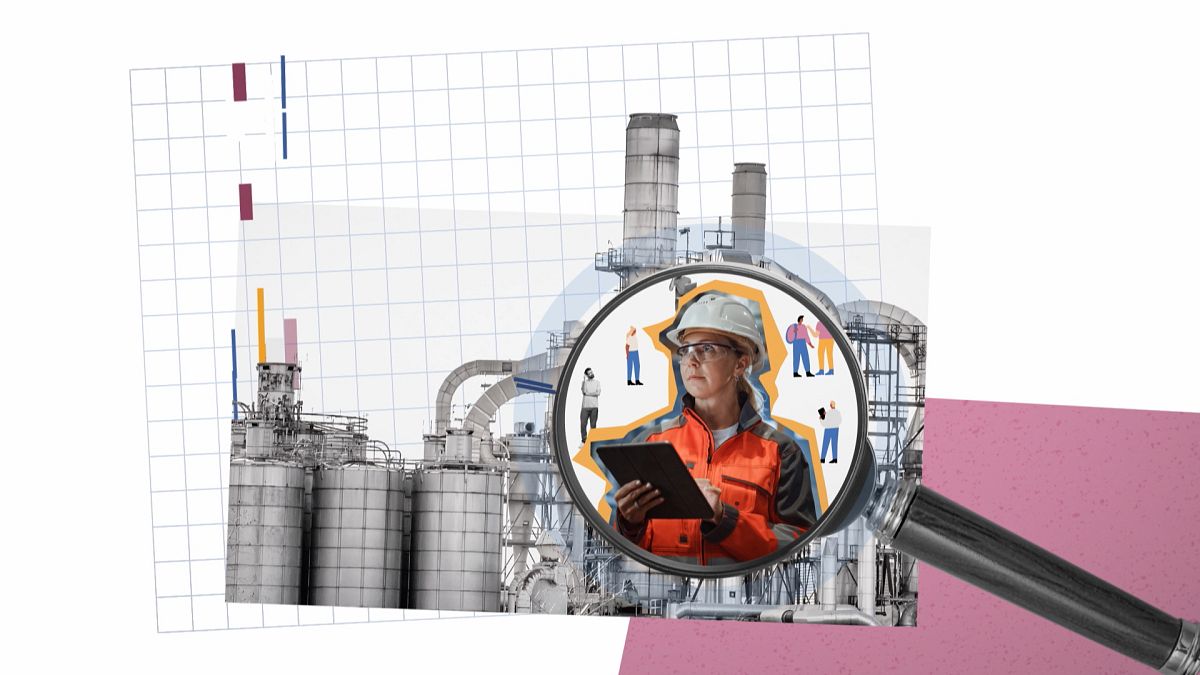Faced with staff shortages and a surplus of unemployed skilled professionals, the European Commission is in a race against time to upskill and retrain the labour market for the industries of tomorrow.
Europe is suffering from a major labour market imbalance. While there are widespread staff shortages in many industries, in others, there is a surplus of skilled workers and too few jobs.
A report by EURES, the European employment services network found that the EU’s 27 member states plus Norway and Switzerland experienced labour shortages in the second and third quarter of 2022 while 24 of these countries experienced labour surpluses.
A labour shortage can occur when there is an insufficient number of skilled persons willing to accept specific roles in a particular field in a set location.
A labour surplus occurs when there is a higher number of skilled persons looking for work within a particular industry than there are roles available.
One of the advantages of having an EU passport is being able to move, work and live freely within the European bloc. In turn, this prevents job markets from stagnating, drives up the number of prospective candidates for roles within highly skilled industries and keeps the job market competitive.
However, some of the advances of the 21st century are having a negative effect on Europe’s labour market:
Digitalisation
Almost every sector within the European economy is undergoing a digital transformation. New technologies, designed to boost output, reduce human error and make processes more efficient, are being introduced across the board. However, many of these cutting-edge technologies require a certain set of skills, which creates the need for employers to retrain and upskill staff.
An ageing population
According to the European Commission, approximately 21 per cent of the EU’s population in 2022 was aged 65 and over. The Commission also found that half of the population was older than 44. As a consequence, the working population across the EU is in decline, it is expected to drop from 265 million in 2022 to 258 million in 2030.
The transition to a climate-neutral economy
The development of clean energy technologies and the shift away from fossil fuels are creating and destroying jobs. For example, SolarPower Europe, an industry voice in Brussels, found that the solar workforce grew by 39 per cent to 648,000 workers by the end of 2022, from 466,000 workers in 2021.
While previous estimates expected there to be one million new jobs in the industry by 2030, it now looks likely that sustained solar growth will create one million jobs by 2025. On the other hand, the coal industry is under pressure to cut millions of jobs and make way for the energy transition.
Fluctuating working conditions
According to the European Trade Union’s EU Job Quality Index, working conditions deteriorated in Greece, Spain and France in 2021. Job satisfaction is one of the push and pull factors affecting professional migration. For example, the Irish Nurses and Midwives Organisation (INMO) reported last year that almost three-quarters of intern nurses and midwives said they would consider leaving the country when they qualified.
Their sources cited declining working conditions and wages not meeting the high cost of living in Ireland as reasons to find employment abroad.
While healthcare is one of the sectors suffering from staff shortages across the EU, there are also shortages in the software, construction and engineering sectors.
What is Europe doing to help?
The European Commission has come up with a number of solutions to tackle the shortage and surplus of workers in specific fields, here’s two
-
Upskilling Europe’s workers – The European Union’s Pact for Skills is an all-encompassing support package designed to help public and private organisations cope with the green and digital transitions. National and local authorities, private companies, education and training providers as well as employment services can all become members. Through networking, guidance and knowledge hubs, participants can avail of webinars, a host of different workshops and access information about EU and national funding opportunities.
-
Boosting recognition of qualifications from outside the EU, to attract staff from further afield – In November 2023, the EU unveiled the Skills and Talent Mobility package to make the EU more attractive to talent from third countries and help address critical labour shortages. The package aims to match employers in the EU with jobseekers from non-EU countries and has also proposed measures to help simplify the recognition of qualifications to promote student and labour market mobility.
To learn more about Europe’s labour shortages and how the EU is upskilling its task force, you can watch the latest episode of Real Economy here.

